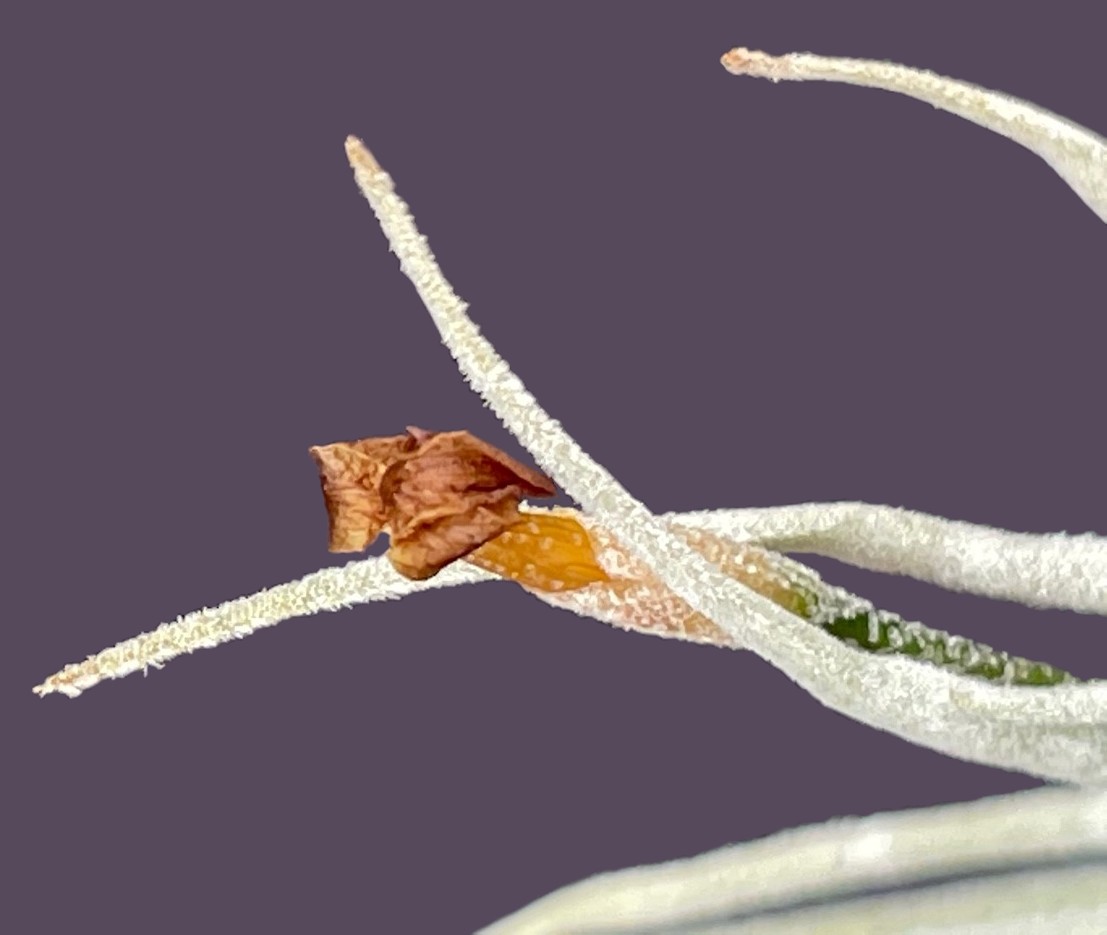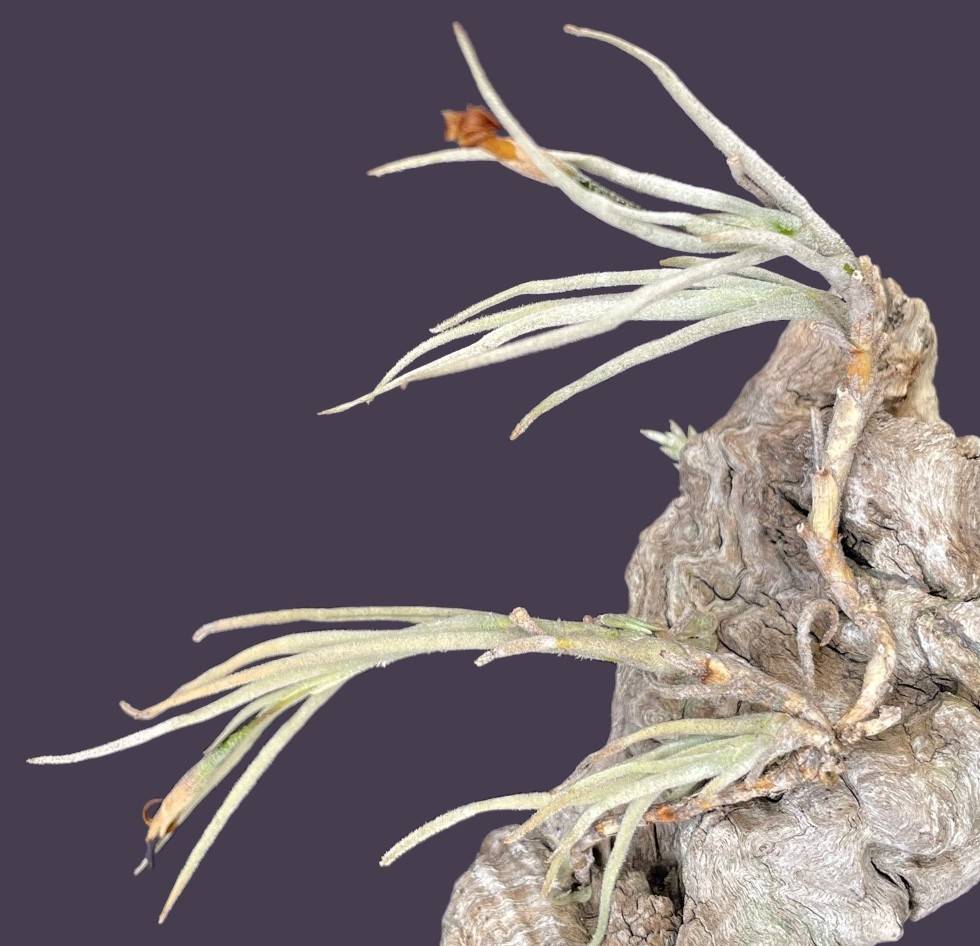

Differs from T. virescens in
1. Grows much larger.
2. Stems – to 25 cm long.
3. Leaves – longer and thicker.
4. Sepals – larger and posterior only 1/2 connate.
The new species lives at high altitudes with strong temperature fluctuations between day and night. Moreover, periods of frost occur intermittently. In cultivation, it seems to be very difficult to obtain, with apparently only few plants surviving in central Europe since its first finding. Rather than collecting more specimens from nature we should try to grow them from seed because such plants adapt better to cultural conditions.
Tillandsia virescens is very variable species, whose taxonomic treatment is still by no means complete. In the Peruvian Bolivian highlands of the Andes, exist deviant forms of the species, that were named and classified differently in the past.
One of them, presently treated as a synonym of T. virescens was Tillandsia williamsii Rusby, comes closest to T. kuehhasii, however it differs by the much smaller (branches 7-10 cm long) and stocky habit, only partially scaled floral bract and sepals with very highly connate posterior pair. Its petals are usually light yellow.
Detail from Gouda in J Brom Soc 60(5): 209. 2010
Tillandsia kuehhasii W.Till Die Bronelie 2:33-5. (1995) shows yellow petals in the picture of the flowering isotype. The description however gives the color brown for the petals. If you look at the details of the picture, it is yellow with some brownish speckles. These speckles can become very intense in the petal blade that can color deep brown to nearly black. This has been shown in the plant collected by Renate Ehlers (EB 950601), also in Bolivia, Sucre - Chatajilla at an altitude of 3610 m. This has flowered in the Utrecht Botanic Gardens several times with larger sepals (16 x 3.5 mm, ecarinate when fresh) and petals (25 x 4 mm) and with an elongated peduncle (3.5 cm). It has the typical T. kuehhasii habit, long caulescent with clustered branching, see figure 1 (note one 2-petalled flower). It has a weak but pleasant odour, something in between the smell of Hyacinthus and a typical soap smell.
It is well known that petal color is variable in species of the subgenus Diaphoranthema. For example in Tillandsia pedicellata, T. funebris, T. capillaris, T. caliginosa, T. spiralipetala, mostly yellow, yellow with brown speckles or totally brown. It is rare that it can also be blue, which has been recently found for T. spiralipetala, in collections from Cuzco, Peru (Nunez, P. & S. Walsh 6284 {CUZ, USM}).